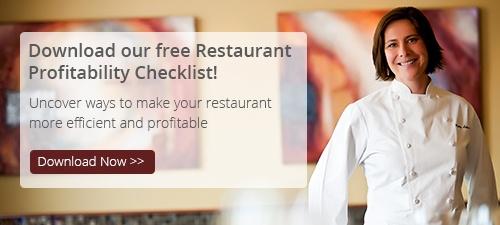What to Include in a Restaurant Profit & Loss Statement
February 19th, 2023 | 7 min. read

Your business is unique in that it's a service business that also deals with cost of goods. Because of this, restaurant profit and loss statements have an ideal structure for the restaurant industry. They are used to record and analyze revenue and expenses over a period of time.
Due to the nature of the restaurant industry and small businesses alike, monthly statements are recommended to keep tabs on what is affecting your business on a consistent basis. That way, should you need to make any adjustments, you can implement the changes sooner rather than later.
At CSI Accounting & Payroll, we've worked with restaurant owners like you for over 50 years. We know what it takes to make an organized, accurate restaurant profit and loss statement. You’ll want to include specific indicators that are important to your establishment within each of the following main sections:
- Revenue
- Cost of Goods Sold
- Cost of Labor
- Operating Expenses

Revenue
Under this section, you'll want to list your sources of income. That can include the obvious, such as food and beverage sales, as well as any catering efforts and merchandise sales from souvenirs or gift cards.
One thing that some restaurants consider is liquor sales. That would be included here as well. However, with the effort that goes into licensing and supplying liquor, this only benefits you if you do it well. We have worked with a restaurant next to a sports stadium that had plenty of sales to back their decision, and we've also worked with a business that did not feel that their decision paid off.
Cost of Goods Sold
Costs of goods sold, often referred to as COGS, are especially important for restaurants to track because they drive your business's profitability and should be the primary driver for setting your menu prices.
Inventory for each subsection listed in your revenue stream should also be accounted for in your overall restaurant cost of goods, although your inventory should not vary too much month-to-month.
To determine your gross profit or loss, subtract COGS from revenue.
Cost of Labor
The cost of labor is important to keep tabs on; payroll is one of the biggest expenses of most small restaurants. If you're overstaffed, you won't be profitable during this time. We're not encouraging you to reduce your staff, but you should be aware of when your staff costs are too high - and know how to manage this.
To ensure you're not overstaffed, it may be helpful to separate front-of-house staff from kitchen staff to see where excess employment may be costing your business. Be sure to record both salaried and hourly employees to determine how many employees you need to provide effective service without spending too much on payroll.
Operating Expenses
Your restaurant operating expenses include any relevant expenditures related to:
- Occupancy (rent, utilities, taxes)
- Insurance
- Supplies (dinnerware, napkins, glassware)
Most operating expenses are considered fixed costs, but some can vary. Sometimes it depends on lease agreements and vendors, and they may fluctuate if essential repairs to your building or equipment arise.
To determine your net profit or loss, subtract both the cost of labor and operating expenses from the gross profit or loss.
Work With an Experienced Restaurant Accounting Service
Regardless of the type of restaurant you operate, your restaurant profit and loss statement should reflect all aspects of your business. These suggestions are a starting point to identify your restaurant's major indicators that should be monitored on a monthly basis. Restaurant profit and loss statements can also be used to prepare more elaborate quarterly and yearly reports to track the progress of your business over time.
If you would like to learn more about how to get monthly financial statements - and are interested in hearing more about how CSI Accounting & Payroll's restaurant accounting service can benefit you - click the button below to schedule a free consultation.
Not ready to talk? That's okay! Instead, we encourage you to download our free Restaurant Profitability Checklist by clicking the image below:
Brian began working at CSI in 1996, and he purchased the business in 2002. As Owner, his primary role is in the management and growth of the firm. Since 2002, the firm has more than quadrupled in size. In 2009, Brian started CSI’s payroll service to complement CSI’s accounting and tax services. Brian received his Bachelor’s degree from the University of North Dakota, with a double major in Accounting and Financial Management. He’s a member of both the National Society for Tax Professionals and the National Society for Accountants, and he serves on the board of directors for the Professional Association of Small Business Accountants, where he was once president. Brian also serves on the business advisory council for Opportunity Partners, an organization that helps people with disabilities find employment. He’s also contributed to several business books, including Six Steps to Small Business Success and The Lean Mean Business Machine. Fun Fact: To help put himself through college, he used student loans, delivered pizzas, and worked summers in a salmon processing plant in Alaska.

